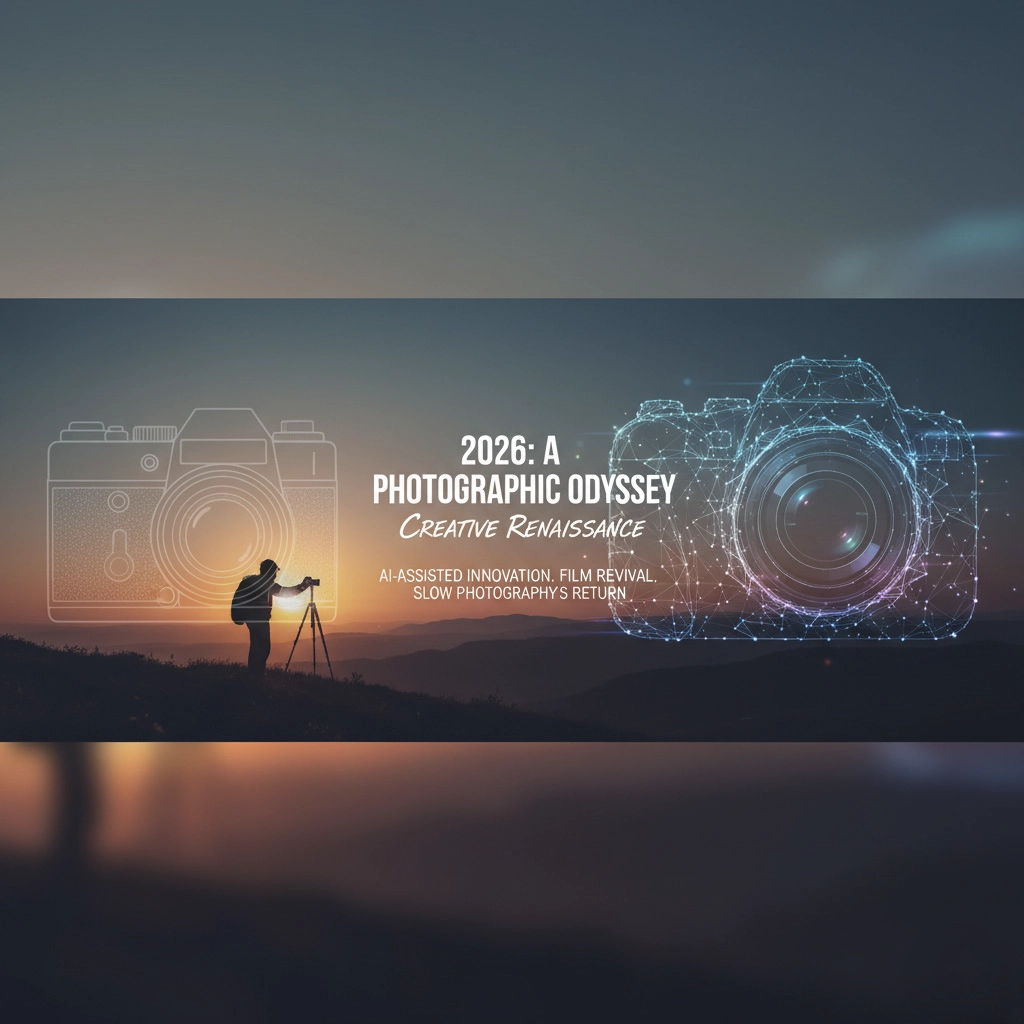
Photography in 2026: Where Art and Intelligence Meet
2026 promises a creative renaissance for photographers. From AI-assisted tools to the revival of film and slow photography, this year will challenge how we see, create, and connect. Here’s what every photographer should expect in the year ahead.
Table of Contents
ToggleWhat follows isn’t a list of gadgets or rumours from trade shows. It’s a reflection — part forecast, part meditation — on what photography in 2026 might bring for those of us who live through the lens.
The rhythm of photography has always followed two heartbeats: one technical, one emotional. We advance because of the first — new lenses, clever sensors, AI tools that see in ways we never could — but we endure because of the second. It’s that quiet pulse that makes us pause in the cold before dawn, or wait for light to spill over a hillside.
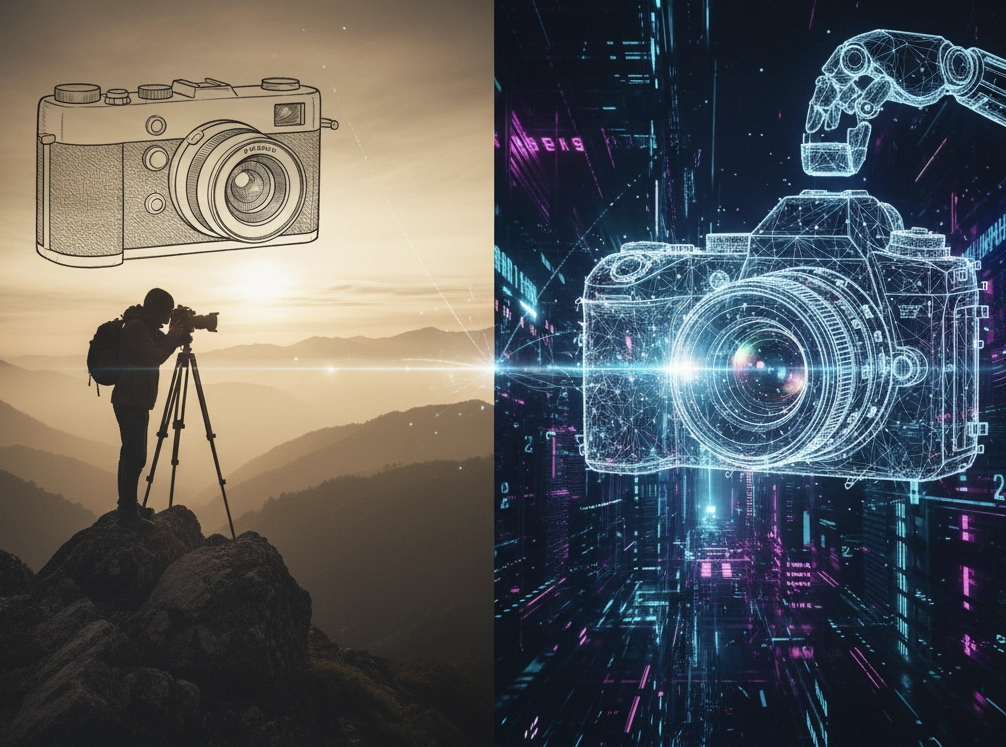
As we approach 2026, photography stands in a fascinating space between the two. Never before has it been easier to make an image — and never before has it mattered so much why we make one. The coming year will deepen this tension, pushing us to question what “photographic truth” means, what the craft looks like when shared with machines, and where the artist still stands in the flood of automation.
What follows isn’t a list of gadgets or rumours from trade shows. It’s a reflection — part forecast, part meditation — on what 2026 might bring for those of us who live through the lens.
Predictions for 2026 in Brief
1. Cameras will think ahead.
AI won’t just assist — it will anticipate. Expect cameras that adapt to your habits, subjects, and style before you press the shutter.
2. Authenticity will outshine perfection.
The more artificial images flood our screens, the more value we’ll place on imperfection — film grain, soft focus, and hand-made texture.
3. The local story will matter most.
Photographers will find new depth in the familiar: local woodlands, nearby towns, and overlooked landscapes. Sustainability will become both an ethic and an aesthetic.
4. Smaller communities will thrive.
The loudest platforms will fade in importance as photographers seek quieter spaces — curated, conversation-based, and human.
5. Emotional honesty will define success.
The best photographs of 2026 won’t be the sharpest or most advanced — they’ll be the ones that feel genuine, carrying the mark of the person behind the lens.
Intelligence in the Camera: The Age of Anticipation
Artificial intelligence has already changed the tools we use, but 2026 will mark a shift from reaction to anticipation. Cameras are learning not just to assist us, but to predict what we intend to create.
Manufacturers are quietly building models that can read patterns in your past images, then adjust autofocus behaviour, metering, and even colour rendering accordingly. The Canon, Sony, and Nikon flagships rumoured for 2026 may not shout about AI — but they’ll use it in nearly every decision they make, from recognising specific subjects you’ve photographed before to dynamically adjusting microcontrast for skin, fur, or sky.
Editing software will follow suit. Lightroom and Capture One already analyse our adjustments; the next versions will be able to suggest entire looks — a kind of auto-curation of your visual style. For many photographers, this will feel like liberation: less time in menus, more in the field. But it also raises a deeper question: when the camera knows what we want before we do, who’s truly composing?
That, I think, is where the artist re-enters the frame. The human response — the Adobe Firefly AI — official Adobe page explaining its generative AI tools.
The Rise of the Imperfect Image
Ironically, the cleaner our tools become, the more we crave the rough edge of imperfection. In 2026, authenticity will become the new luxury.
We’ll see more photographers leaning back into tactile processes: grain, scratches, hand-printed textures, and images that feel physically touched. The backlash against AI-generated art will spill into photography, fuelling a hunger for marks that prove a human hand was involved.
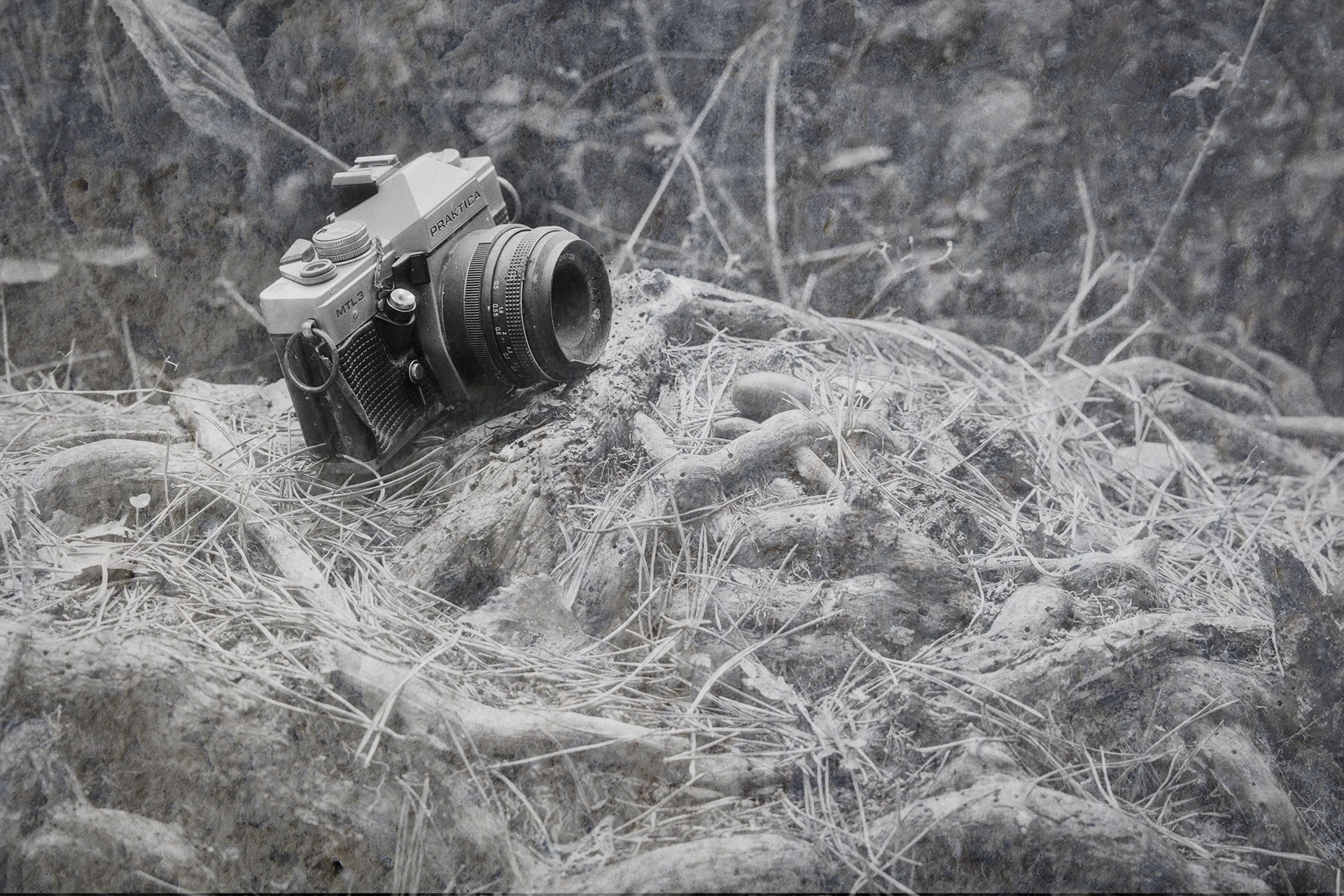
Film will keep its slow, steady resurrection — not as nostalgia, but as rebellion. Black and white medium format, with its ritual of loading, winding, and waiting, offers what no algorithm can: time. The deliberate pace of film will stand in beautiful contrast to the instant predictability of AI editing. And as boutique film stocks, hand-mixed developers, and home darkrooms return, 2026 will quietly become the year of slow photography.
But this isn’t about purity. Many will mix analogue and digital freely — scanning negatives for subtle tone, then finishing digitally. The hybrid process itself will become part of the aesthetic: images that carry the fingerprints of both eras.
Beyond Resolution: The Emotional Sensor
For decades we’ve measured progress in megapixels, dynamic range, and ISO performance. By 2026, those numbers will matter less than ever.
Manufacturers are beginning to pivot toward what might be called computational feel — the ability of a camera to interpret rather than record. Expect “emotion profiles” to appear in firmware menus: subtle colour algorithms designed to evoke mood rather than neutral accuracy. A twilight profile that deepens shadows and cools highlights, or a portrait mode that biases tone curves toward warmth and intimacy.
Meanwhile, global shutters will finally reach the mainstream, eliminating rolling distortion and allowing for perfect synchronisation with artificial light. Long exposure specialists will benefit most; we’ll be able to blend movement and stillness with unprecedented clarity.
Yet, amid all this sophistication, the most meaningful images will remain those that break from precision — photographs where softness or motion blur adds emotion rather than subtracting it. The most advanced tool in 2026 will still be the one that lets you express feeling, not fidelity.
The New Aesthetic: Atmospheric Storytelling
Every era of photography carries its dominant mood. The 2020s began brightly, full of vivid colour and cinematic sharpness. But as we approach 2026, the mood is shifting.
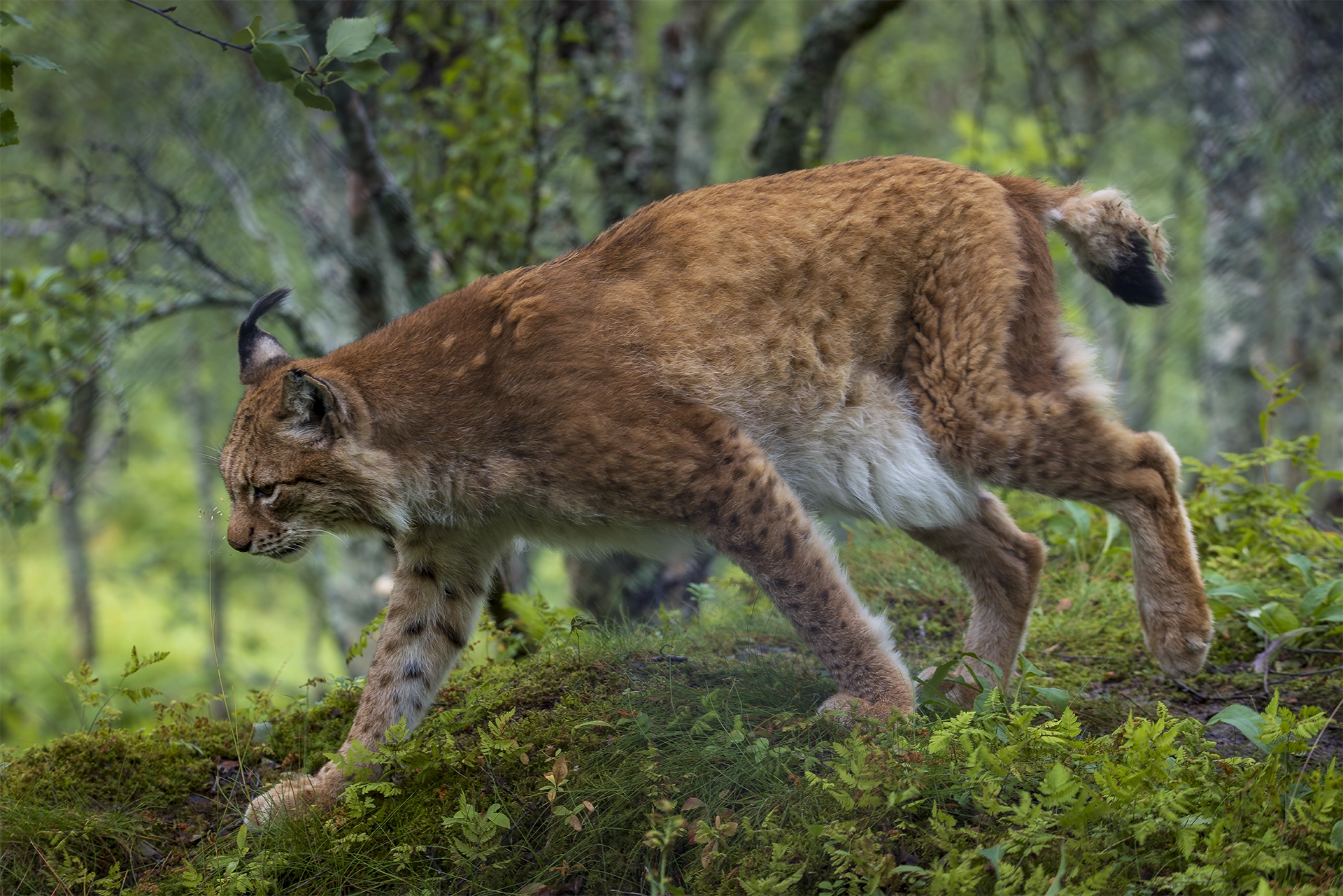
Across exhibitions, zines, and social media, a quiet trend is growing: atmospheric storytelling. Photographers are embracing mystery — mist, shadow, moonlight, reflections — to evoke emotional landscapes as much as physical ones.
This aesthetic, born from long exposure and patient observation, speaks to something deeper than style. It’s the counter-voice to an oversaturated, over-lit culture. In a world where everyone can make perfect clarity, we’re drawn to ambiguity.
Expect to see more long exposures in subdued light, more night photography under cloud and moon, and more composite techniques that recreate the feeling of being somewhere rather than merely documenting it. The result is imagery that feels cinematic yet personal — a bridge between storytelling and stillness.
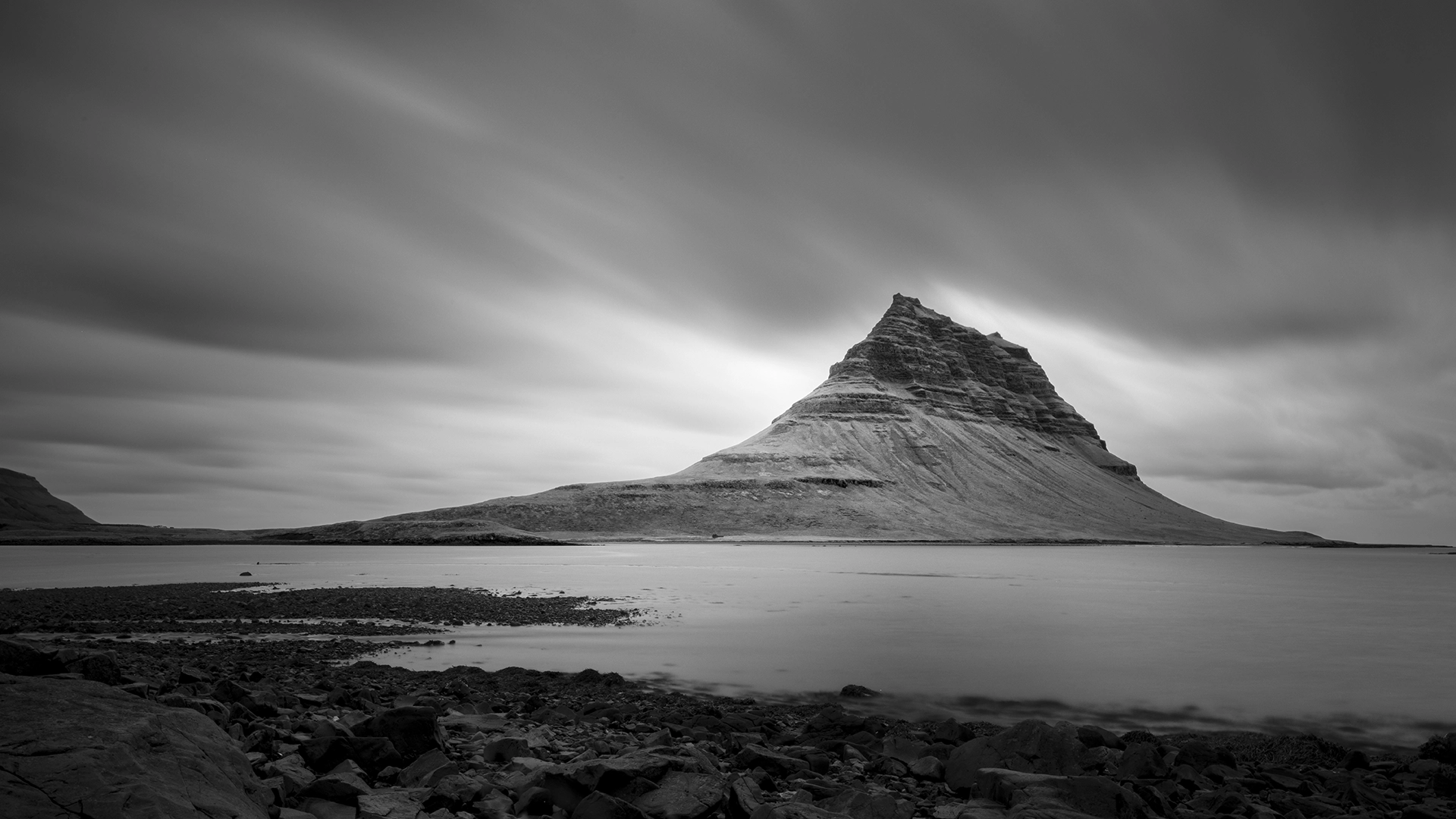
This is where my own compass points most clearly. I’ve found myself working in twilight, letting the camera absorb more time than I ever could. The long exposure becomes a diary entry — a record not of what I saw, but what it felt like to stand there waiting for the light to change.
Social Shifts: The Quiet Migration
Photography’s digital home is moving again.
The vast, noisy platforms that once promised exposure now feel overcrowded and algorithmic. In 2026, more photographers will drift toward smaller, quieter spaces: platforms like Glass, Vero, or personal newsletters where images can breathe.
This migration will redefine the online photography culture. Instead of chasing reach, creators will value connection — genuine dialogue, shared process, slower interaction. The age of constant posting will give way to curated presence: one good image, carefully shared, will carry more weight than a dozen quick uploads.
Simultaneously, collectors and print buyers will rediscover the value of provenance. As AI imagery floods feeds, people will want to know who made a photograph, where, and why. Limited-edition prints, signed darkroom work, and handmade books will grow in importance — physical proof that something real passed through light and chemistry and time.
The digital world may become louder, but photography in 2026 will learn to whisper again.
Sustainability and the Local Lens
As travel costs rise and environmental awareness deepens, many photographers will turn their gaze closer to home. 2026 will be the year of the local narrative.
Rather than flying across continents, we’ll rediscover the subtle magic of our own landscapes — the weather that changes by the hour, the familiar woods at unfamiliar times of day, the way seasons bend light differently each month.
This shift isn’t just ecological; it’s creative. Photographing near home invites patience and intimacy. You begin to know the rhythm of a place, its moods, and its small miracles. The photographs that result carry depth because they come from sustained attention, not novelty.
Workshops and projects will increasingly emphasise sustainability — fewer miles, more meaning. Expect new contests and grants that celebrate regional storytelling, as well as gear designed for durability and repair rather than yearly replacement.
The future, in other words, is not elsewhere; it’s the field just beyond your doorstep.
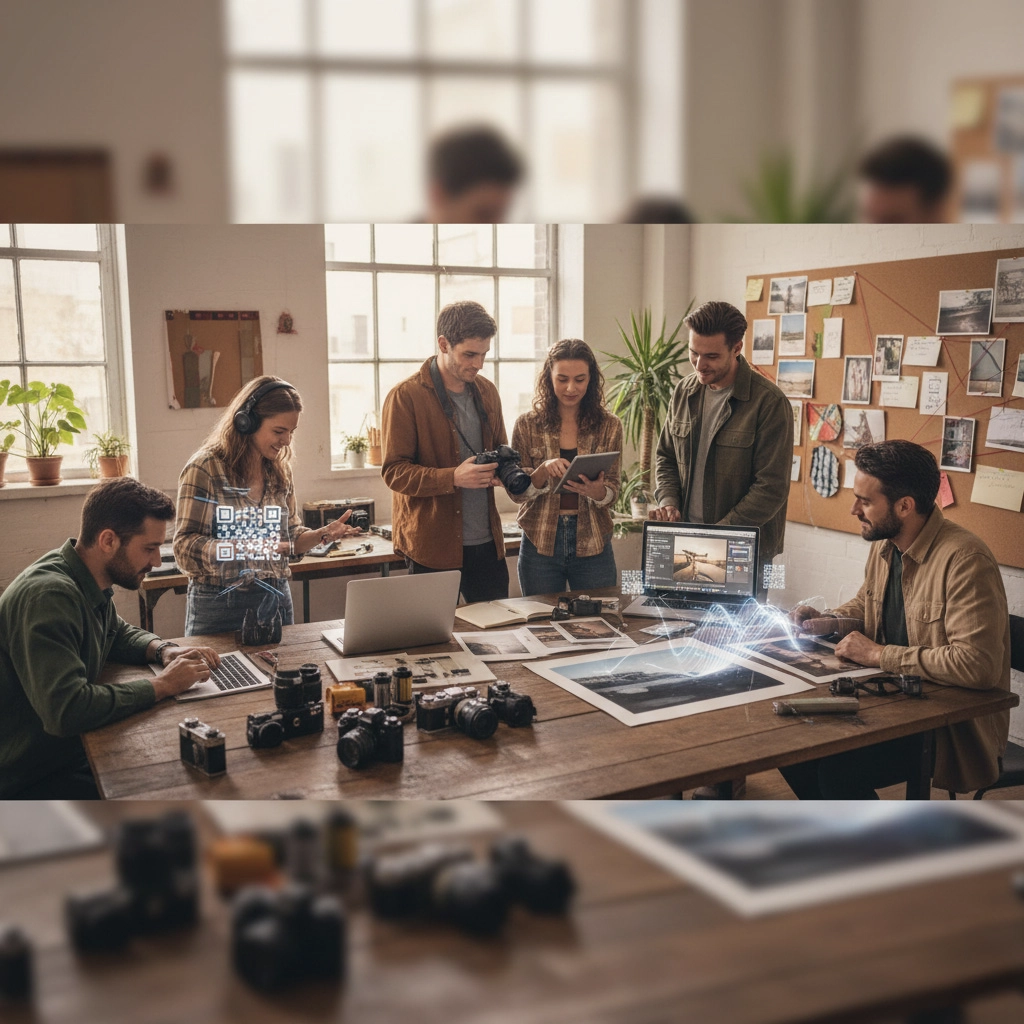
Community and Collaboration
In 2026, collaboration will replace competition as the dominant energy among photographers.
We’re already seeing this shift — collectives forming around shared themes, joint zines, and online editing sessions where photographers critique and support one another. The line between writer, photographer, and curator will blur further.
Expect more interdisciplinary projects combining photography with sound, poetry, or environmental data. Technology will make this easier: interactive galleries, augmented prints that play ambient audio when scanned, or books with embedded QR codes leading to behind-the-scenes recordings.
The goal won’t be novelty, but connection — building work that lives across forms, where the photograph becomes part of a larger sensory experience.
It’s a natural evolution: photography began as a solitary act, but in an era of shared creation, collaboration is what keeps it human.
The Personal Eye: Emotional Honesty Over Perfection
As tools become more intelligent, the photographer’s true value will lie in emotional honesty.
In 2026, we’ll see less obsession with technical perfection and more emphasis on visual sincerity — images that reveal the photographer’s curiosity, humour, or vulnerability. Social feeds will gradually shift from curated portfolios to authentic journals.
For emerging photographers, this will be liberating. You won’t need the best equipment to matter; you’ll need a point of view. The question won’t be how sharp is it? but does it feel true?
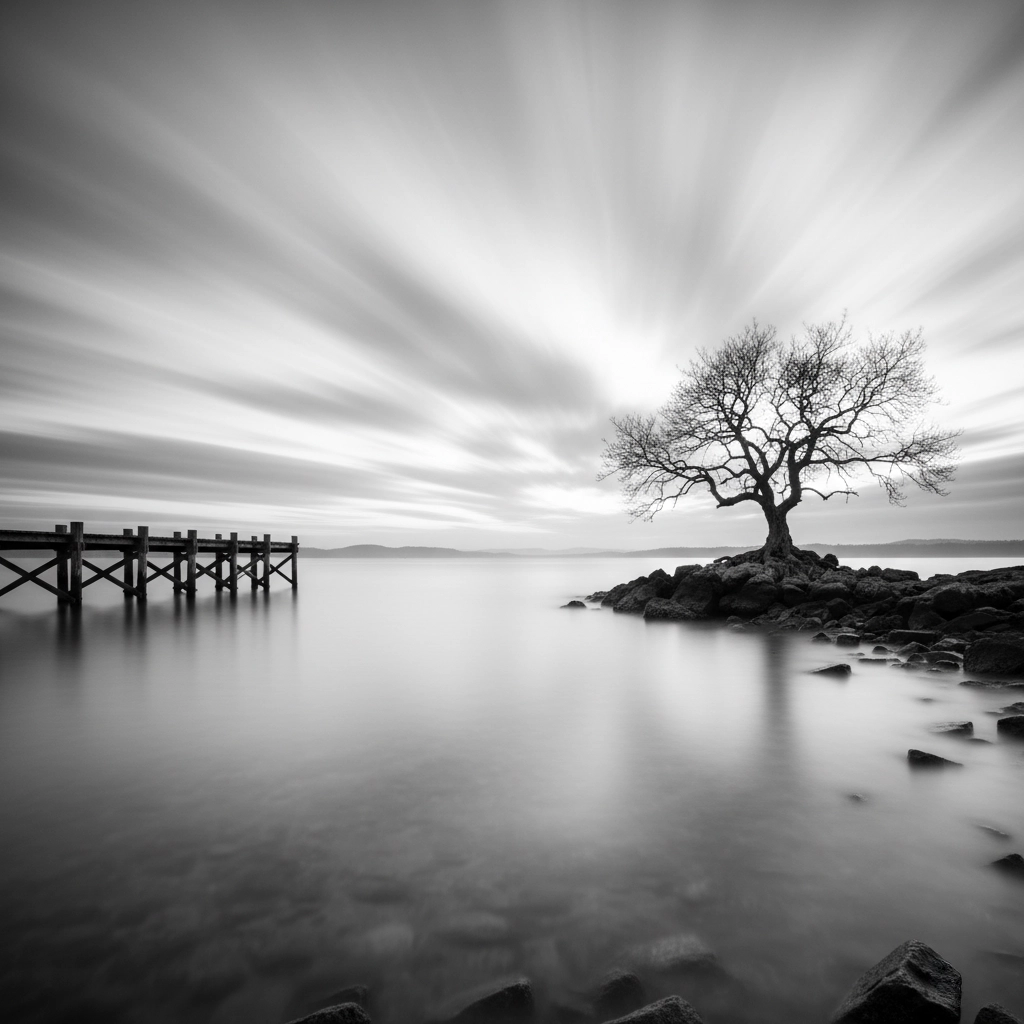
For seasoned professionals, the challenge will be to unlearn perfectionism — to let small flaws breathe, to leave space for ambiguity. That, ironically, is what audiences are hungry for: photographs that feel lived in, not engineered.
The truth is simple but often forgotten: technology can capture anything, but only people can reveal meaning.
New Directions in Photographic Education
Learning photography in 2026 will look different. Online courses are evolving from static video tutorials to interactive mentorships powered by AI guidance and community critique.
Imagine uploading your image and receiving feedback not from a faceless bot, but from a hybrid system that references the visual principles of your favourite photographers — and offers compositional or tonal suggestions in their style. It’s not science fiction; early prototypes already exist.
But at the same time, traditional workshops will thrive. There’s something irreplaceable about standing in the field beside another photographer, feeling the same cold air, waiting for the same light. Education will divide cleanly into two paths — virtual precision and tactile experience — and the best photographers will move comfortably between both.
What 2026 Asks of Us
So what will 2026 truly bring?
Not just smarter cameras or smoother sensors — those are inevitable. What’s more important is what it will ask of us.
It will ask us to define our relationship with automation: to let it handle the noise but not the voice.
It will ask us to slow down, to look more closely at what’s near, and to rediscover the act of seeing as an act of care.
It will ask us to make work that can’t be mistaken for a prompt or a preset — work that carries our fingerprints, our choices, our breath.
Photography in 2026 won’t be about resisting technology, but about re-centering humanity within it. The future of photography isn’t AI versus artist — it’s AI with artist, the two learning to speak the same visual language while keeping emotion at the core.
A Closing Reflection
As I write this, autumn is tightening its grip on the fields around Tadley. The mornings are misted again, and the low sun glows amber through the last of the leaves. Soon I’ll walk the paths near Baughurst Copse, camera in hand, the air sharp with that familiar mix of decay and renewal.
It’s there — in those quiet, transitional moments — that I feel what 2026 might mean most clearly. Not a year of machines outpacing us, but a year of rediscovery. A year when we remember that photography, at its heart, is still about standing still long enough to see.
The technology will change. The light won’t. And perhaps that’s all the reassurance any of us need.
Frequently Asked Questions: Photography in 2026
What are the biggest photography trends for 2026?
2026 will see photographers blending advanced AI tools with a renewed love of authenticity. Expect smarter cameras, real-time editing assistants, and a strong countertrend toward film, grain, and natural imperfection.
Will AI replace photographers in 2026?
No — AI will enhance creativity, not erase it. It will handle routine edits, analyse lighting, and suggest styles, but emotional storytelling and artistic intent will always belong to the photographer.
Is film photography still relevant in 2026?
Absolutely. Film has evolved into a creative statement rather than a limitation. Its slower rhythm, texture, and depth offer a welcome contrast to the speed of digital and AI photography.
How can I make my photography stand out in 2026?
Focus on emotional honesty and personal connection. Let your images reflect who you are, not just what you see. In a world full of machine-made imagery, authenticity will be your most powerful tool.
What type of photography will sell best in 2026?
Collectors and buyers are shifting toward atmospheric, story-driven images — landscapes, abstracts, and portraits that evoke mood and meaning rather than technical perfection.
Join the Conversation
Photography’s next chapter is being written now — by those who choose to create with both curiosity and care.
What do you think photography in 2026 will bring?
Share your thoughts or experiences in the comments below.
Let’s start a discussion about how we, as photographers and observers, can shape a more authentic, creative future together
Stephen Paul Young
I’m Steve (Stephen Paul Young), a landscape, digital and film photographer with a deep love for capturing the beauty of nature, light, and atmosphere. Whether I’m out at dawn chasing the perfect sunrise, exploring woodland trails, or experimenting with black-and-white film, photography is my way of seeing the world. I’m drawn to the small details and the big vistas alike, always looking for that moment where light, texture, and emotion come together. For me, photography isn’t just about taking pictures—it’s about storytelling, connection, and the joy of being present in the landscape.
You May Also Like

A Day Trip to the North Norfolk Railway: 10 Reasons Why the Canon EOS 5DS R is Still a Fantastic Camera in 2024
27 August 2024
Experimental Film Photography at Dawn: Silchester Roman Wall on 35mm Film in Medium Format Camera
17 May 2025